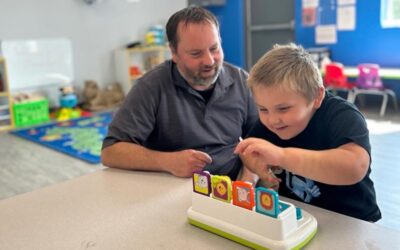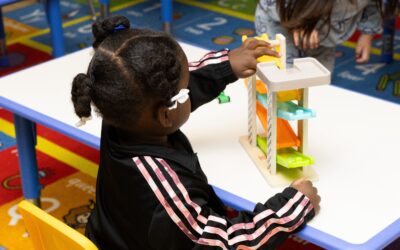If you’re a parent or guardian of a child with autism, you celebrate the successes of your child engaging in structured environments outside of the home. Whether that be at school, daycare or receiving ABA therapy, hopefully you can feel at peace knowing they are with trained professionals who can redirect repetitive behavior and encourage positive behavior.
If your child tends to thrive in those outside environments, but you feel overwhelmed at the thought of escalating behaviors when your child is at home, you’re not alone! Luckily, the ideas that make outside structured settings beneficial for your child can be applied at home with relative ease. Check out these 5 tips to improve behavior at home in children with autism.
- Use time and scheduling to reduce stress & tantrums from change.
It’s no secret, children on the spectrum tend to thrive when they are in a structured setting. The best way to build structure at home is to use time and scheduling to break up your child’s day and activities in a way that they can understand and expect.
Our best practices for using time are:
- Set timers, so that your child has an audible cue for when it’s time for the next activity. These can also be useful as minute warnings, for when your child experiences anxiety or difficulty at leaving one activity for another. The audible timer lets them know that they have a certain amount of time left before the change.
- Make a physical calendar or set of agendas that your child can refer to with ease. If it helps your child understand, try using images to represent the activities on your calendar.
- Use First/Then statements to help your child understand the order in which things will happen during their day. This is especially helpful if they tend to want things or activities right away. “First we finish our chores, then we go to the park.”
Time and scheduling can be tools of structure for you and your child. Although unforeseen circumstances can put a wrench in plans unexpectedly, try planning ahead to the best of your ability.
2. Use tech & games designed for development and learning.
If your child loves electronics, why not take advantage of their screen time by making it beneficial to their learning and development? There’s a variety of apps out there built to help children develop cognitive skills with creative games and activities. Here’s a few:
All of these apps are available on mobile devices, easy to learn, and provide the benefit of keeping your children engaged while teaching them new skills or building on their education and therapy.
3. Create a safe zone within your home.
For some, leaving their children to play unsupervised can be a scary thought. To reduce this anxiety, why not try creating a safe zone within your home if you feel your child has reached the developmental milestones where this is a safe possibility?
Safe zones can be areas that are filled with things that are not only safe for your child to use, but are also catered to their skills and needs. For example, if you designate a certain room in the house as a safe zone for play, fill it with toys that are safe and sensory friendly. Designating a space as a safe zone for your child can also benefit them by fostering a sense of belonging in that area. If your child feels safe there, when they feel the emotions that can bring about tantrums, redirect them to this zone not as punishment, but as a way for them to process in an environment that is built for them.
4. Remain positive & calm.
This one’s for you. If you find yourself trying to de-escalate your child’s behavior, it can be easy to get frustrated and use phrases with negative words like “don’t” and “no.” You may have better luck however, if you use more positive verbiage. Instead of “Don’t do that” say “Do this…” to redirect their behavior to something more positive.
Additionally, remaining calm to the best of your ability can make all the difference. It may feel like your child just won’t listen, but if you can remain calm while redirecting their behavior, they may respond better and be more willing to listen to your explanation on why you want to redirect them. Though this tip may seem like a no-brainer, it’s something that can escape even the most mindful of parents in times of heightened sensitivity. Our suggestion: try some mindfulness activities like meditations or positive affirmations, and include your child if you can!
5. Build on behavior therapy.
One of the crucial aspects that make early intervention and ABA therapy so effective is that they are meant to be intensive. In other words, there is a level of consistency over a long period of time that fosters progress in children on the spectrum’s behavior.
One of the simplest things you can do to improve your child’s behavior at home is to build on their therapy. What we mean by that is, do what you can to know what your child is practicing in their therapy session- and apply bits and pieces of it at home, or simply expand on what was already taught. Doing this will bring about the consistency that is proven to be beneficial. In short, it will help them inside and outside the classroom and home.
If your child receives services with The Place for Children with Autism, we’re more than happy to discuss how you can build on your child’s development and learning at home.



